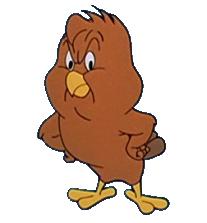Are Pennsylvania Police Officers Being Misinformed About DUI?

One of the important aspects of DUI enforcement that is being treated lightly is properly training Pennsylvania’s police force. The truth of the matter is that police officers in PA who receive very little DUI training are entrusted with the very difficult task of determining who is driving drunk and who isn’t. Furthermore, there is a great deal of pressure put on police officers to arrest people for DUI because it is well known that the officers with the most DUI arrests (not actual convictions) receive awards and promotions. So here is your recipe for disaster: over-zealous police officers “hunting” for DUIs without really knowing how to spot one with certainty.
To compound the problem, much of the little training police officers do receive is not scientifically valid. Here is some information for law enforcement from the website padui.org:
Following are 20 cues which police officers may use to detect nighttime drunk drivers. The cues were developed from interviews with a variety of law enforcement specialists in DUI detection; from a detailed analysis of more than 1,000 DUI arrest reports from different geographical regions; and from a field study in which cues observed in more than 600 patrol stops were correlated with driver BAC levels. These cues represent the most systematically developed method available for visually predicting whether a vehicle operated at night is being driven by a DUI driver or a sober driver.
Turning with a wide radius 65% Straddling center or lane marker 65% Appearing to be drunk 60% Almost striking object or vehicle 60% Weaving 60% Driving on other than designated roadway 55% Swerving 55% Slow speed (more than 10 mph below limit) 50% Stopping (without cause) in traffic lane 50% Following too closely 50% Drifting 50% Tires on center or lane marker 45% Braking erratically 45% Driving into opposing or crossing traffic 45% Signaling inconsistent with driving actions 40% Slow response to traffic signals 40% Stopping inappropriately (other than in lane) 35% Turning abruptly or illegally 35% Accelerating or decelerating rapidly 30% Headlights off 30% The number given after each visual cue is the probability that a driver exhibiting that cue has a BAC equal to or greater than 0.10 percent. For example, the 65 for the first cue; turning with wide radius, means that chances are 65 out of 100 that a driver who turns with a wide radius at night will have a BAC equal to or greater than 0.10 percent. The 50 for drifting means that chances are 50 out of 100 (50:50) that a driver who is drifting at night will have a BAC equal to or greater than 0.10 percent.
Each value shown is based on seeing only one cue. However, multiple cues are often seen. When two or more cues are seen add 10 to the highest value among the cues observed.
How many of us have taken a wide turn, maybe because we were talking on the phone or were holding a cup of coffee between our legs? According to this information with is originally taken from the National Highway Traffic Safety Administration manual “Visual Detection of DWI” two out of three of us were drunk when taking that wide turn. These percentages have not been peer reviewed and can cause officers to draw incorrect conclusions about who should be pulled over for DUI and who shouldn’t. I can tell you from actual trial experience that many of these “DUI cues” are not fair indicators of whether or not the motorist was drunk. For example, based upon current Pennsylvania DUI case law, if a police officer pulls someone over simply for “drifting within their own lane,” the case is likely to be thrown out due to lack of probable cause to stop the vehicle.
People all over PA want to solve the DUI problem and keep our families safe. The first step to that is providing police officers with the right training needed to enforce DUI laws.
Mike says:
Justin,
I have noticed police tend to include more than 1 of these DUI detection cues in reports and affidavits (i.e. wide turn, braking erratically, and weaving in lane). Does having multiple detection cues lessen the chances of dismissing a DUI charge?
Mike